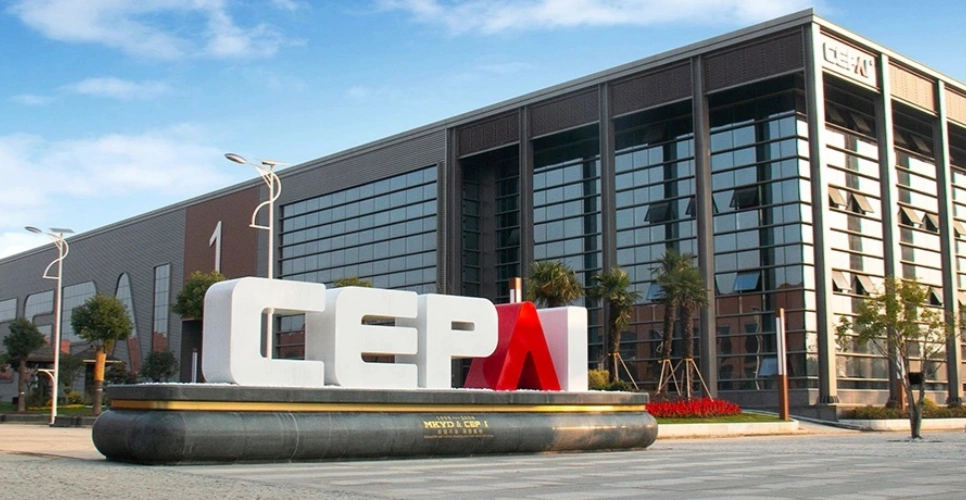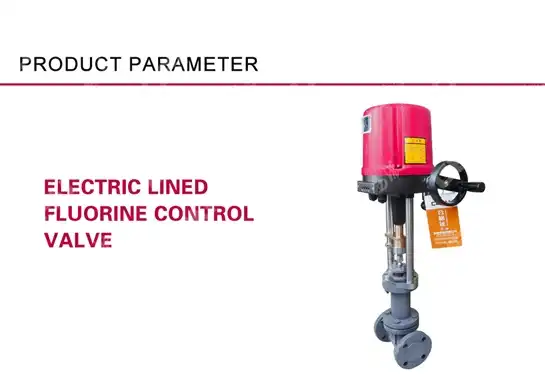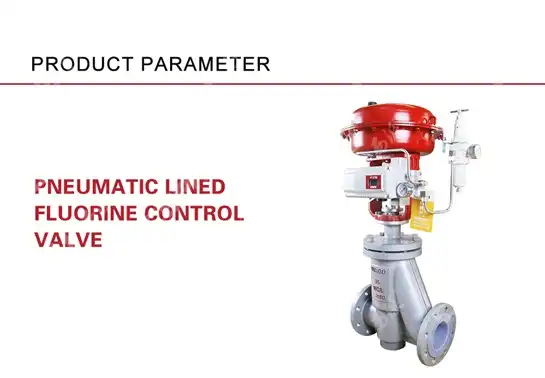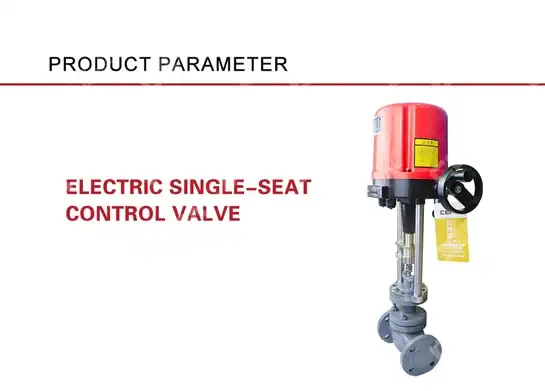How Pneumatic Low-Temperature Valves Master Cryogenic Flow?
Picture this: your facility experiences a sudden cryogenic system failure at -320°F, causing costly product losses and potential safety hazards. This nightmare scenario haunts industrial operators worldwide who struggle with inadequate valve solutions for extreme temperature applications. The answer to mastering cryogenic flow lies in understanding how pneumatic low-temperature valves leverage advanced engineering principles to maintain precise control under the most challenging conditions. These specialized valves combine pneumatic actuation with cryogenic-resistant materials and innovative design features that ensure reliable operation where standard valves fail, making them indispensable for industries handling liquefied natural gas, liquid nitrogen, and other cryogenic media.
Understanding Pneumatic Low-Temperature Valve Technology in Cryogenic Applications
-
The Science Behind Cryogenic Flow Control
Pneumatic low-temperature valves represent a sophisticated fusion of pneumatic actuation technology and specialized materials engineering designed to function reliably at extremely low temperatures. These valves must overcome unique challenges that standard industrial valves cannot address, including material brittleness at sub-zero temperatures, thermal contraction effects, and the need for precise flow control of cryogenic fluids. The fundamental principle behind their operation involves using compressed air or gas to actuate valve mechanisms while maintaining structural integrity and sealing performance at temperatures as low as -423°F (-253°C). The pneumatic actuation system in these valves provides several critical advantages over manual or electric alternatives in cryogenic environments. Compressed air systems remain functional at extreme temperatures where electric motors might fail due to condensation or material brittleness. The pneumatic actuator housing is typically designed with extended bonnets that create a thermal barrier between the cryogenic process fluid and the actuation mechanism, ensuring consistent operation regardless of the process temperature. This design approach allows the pneumatic low-temperature valve to maintain its responsiveness and control accuracy even when handling liquefied gases that would cause conventional valves to malfunction or fail completely.

-
Advanced Materials and Construction Methods
The construction of pneumatic low-temperature valves requires careful selection of materials that retain their mechanical properties at cryogenic temperatures. Austenitic stainless steels, particularly grades 316L and 304L, are commonly used for valve bodies due to their excellent low-temperature toughness and corrosion resistance. These materials undergo specific heat treatment processes to optimize their microstructure for cryogenic service, ensuring they don't become brittle when exposed to extreme cold. Sealing systems in pneumatic low-temperature valves employ specialized elastomers and composite materials designed for cryogenic applications. Traditional rubber seals would become rigid and crack at low temperatures, leading to leakage and system failure. Instead, these valves utilize PTFE-based seals, metal-to-metal sealing surfaces, or specially formulated low-temperature elastomers that maintain flexibility and sealing integrity throughout the operating temperature range. The stem and disc assemblies are engineered with precise clearances and thermal expansion coefficients to accommodate the significant temperature variations encountered during startup, operation, and shutdown cycles.
Pneumatic Actuation Systems for Extreme Temperature Performance
-
Thermal Protection and Insulation Strategies
Effective thermal management is crucial for pneumatic low-temperature valve performance in cryogenic applications. The valve design incorporates multiple thermal protection strategies to prevent heat transfer from affecting the pneumatic actuator while ensuring the valve body maintains proper contact with the cryogenic process fluid. Extended bonnets create a thermal pathway that allows temperature gradation from the cryogenic process temperature to ambient temperature at the actuator level. Vacuum insulation jackets are often employed around the valve body to minimize heat ingress into the cryogenic system while protecting the valve internals from extreme temperature shock. These insulation systems consist of multiple layers of reflective materials separated by vacuum spaces, creating an extremely effective thermal barrier. The pneumatic low-temperature valve benefits from this insulation by maintaining consistent internal temperatures that prevent ice formation on actuator components and ensure reliable pneumatic signal transmission. The actuator mounting system is designed with thermal breaks and insulating materials that prevent conductive heat transfer along mounting bolts and connecting hardware. This comprehensive approach to thermal management ensures that the pneumatic system operates within its design temperature range while the valve body handles cryogenic fluids without compromise.
-
Pneumatic Control Systems and Response Characteristics
Pneumatic low-temperature valves require specialized control systems that account for the unique characteristics of cryogenic flow applications. The pneumatic control signal must be processed through temperature-compensated regulators and filters to ensure consistent actuator performance regardless of ambient temperature variations. These control systems often incorporate positioners that provide precise valve positioning feedback and automatic adjustment for process variations. The response characteristics of pneumatic actuators in cryogenic service differ significantly from standard temperature applications due to changes in air density and potential moisture freeze-out in control lines. Advanced pneumatic systems for cryogenic valves include heated instrument air supplies and moisture separators to prevent ice formation in control lines and actuator chambers. The actuator sizing must account for the increased forces required to operate the valve against cryogenic fluid pressure and potential stem binding due to thermal effects.
Design Innovations for Cryogenic Flow Mastery
-
Flow Dynamics and Cavitation Prevention
Mastering cryogenic flow requires deep understanding of fluid dynamics at extreme temperatures and the unique challenges posed by phase changes in cryogenic systems. Pneumatic low-temperature valves incorporate specialized flow path designs that minimize pressure drops and prevent cavitation, which can cause severe damage to valve internals and downstream equipment. The valve trim geometry is optimized for the specific characteristics of cryogenic fluids, including their low viscosity, high density, and tendency to vaporize rapidly with small pressure reductions. Anti-cavitation trim designs in pneumatic low-temperature valves often feature multiple pressure reduction stages that allow controlled expansion of the cryogenic fluid as it passes through the valve. This staged pressure reduction prevents the formation of destructive cavitation bubbles while maintaining precise flow control. The trim materials are selected for their resistance to cavitation erosion and thermal shock, ensuring long service life even under demanding operating conditions. Flow coefficient calculations for cryogenic applications must account for the compressibility effects and density variations that occur as cryogenic fluids warm and potentially change phase during the flow process. The pneumatic low-temperature valve design incorporates computational fluid dynamics modeling to optimize internal flow paths and predict performance under various operating conditions.
-
Emergency Shutdown and Safety Features
Safety considerations are paramount in cryogenic systems, and pneumatic low-temperature valves incorporate multiple fail-safe features designed to protect personnel and equipment in emergency situations. Spring-return actuators ensure that valves move to a predetermined safe position upon loss of pneumatic supply, while quick-exhaust valves provide rapid valve closure when emergency shutdown signals are received. The valve design includes features such as extended stems that keep manual override mechanisms safely away from cryogenic zones, allowing operators to manually operate the valve if necessary without exposure to dangerous temperatures. Leak detection systems and pressure relief capabilities are integrated into the valve assembly to provide early warning of seal degradation or overpressure conditions. Fire-safe design elements ensure that pneumatic low-temperature valves maintain their integrity and sealing capability even if exposed to external fire conditions, preventing release of cryogenic fluids that could exacerbate emergency situations. These safety features are rigorously tested according to international standards to verify their effectiveness under realistic emergency scenarios.
Industrial Applications and Performance Optimization
-
LNG and Natural Gas Processing Applications
The liquefied natural gas industry represents one of the most demanding applications for pneumatic low-temperature valves, requiring equipment that can reliably handle methane and other hydrocarbons at temperatures around -260°F (-162°C). These valves must provide precise control during liquefaction processes, storage operations, and regasification cycles while maintaining zero leakage to prevent product loss and safety hazards. In LNG applications, pneumatic low-temperature valves serve critical functions including loading and unloading operations, tank farm management, and process control within liquefaction trains. The valves must respond quickly to control signals while providing stable operation under varying pressure and temperature conditions. The pneumatic actuation system offers advantages in these applications due to its intrinsic safety characteristics and reliability in explosive atmospheres. Performance optimization in LNG service requires careful attention to valve sizing, trim selection, and actuator specifications to ensure optimal system efficiency and minimal energy consumption. The pneumatic low-temperature valve contributes to overall system performance by providing precise flow control that enables efficient heat exchange and process optimization throughout the LNG production and distribution chain.

-
Aerospace and Rocket Propulsion Systems
Aerospace applications demand the highest levels of reliability and performance from pneumatic low-temperature valves, particularly in rocket propulsion systems that utilize liquid oxygen, liquid hydrogen, and other cryogenic propellants. These valves must operate flawlessly under extreme conditions including rapid temperature cycling, high vibration levels, and precise timing requirements during launch sequences. The design requirements for aerospace pneumatic low-temperature valves include minimal weight, compact packaging, and exceptional reliability since failure is not an option during critical mission phases. Specialized testing protocols verify valve performance under simulated space conditions, including vacuum environments and extreme temperature ranges. The pneumatic actuation system must function reliably using onboard compressed gas supplies while maintaining precise control authority throughout the mission duration. Advanced materials and manufacturing techniques are employed to achieve the stringent performance requirements of aerospace applications, including additive manufacturing for complex internal geometries and specialized surface treatments to enhance durability and performance in the harsh space environment.
Maintenance and Lifecycle Management Strategies
-
Predictive Maintenance Technologies
Modern pneumatic low-temperature valves incorporate advanced monitoring capabilities that enable predictive maintenance strategies designed to maximize uptime and prevent unexpected failures. Embedded sensors monitor critical parameters including actuator position, stem force, internal pressure, and temperature gradients throughout the valve assembly. This data is processed through sophisticated algorithms that can detect early signs of degradation and predict when maintenance intervention will be required. Condition monitoring systems for pneumatic low-temperature valves utilize wireless sensor networks that can operate reliably in cryogenic environments while providing real-time data to control systems and maintenance management platforms. These systems track valve performance trends over time and can identify deviations from normal operating patterns that might indicate impending problems with sealing systems, actuator components, or control elements. The predictive maintenance approach enables maintenance teams to schedule repairs and replacements during planned shutdown periods rather than responding to unexpected failures that could result in costly production interruptions. This proactive approach to maintenance management significantly improves system reliability while reducing overall maintenance costs through optimized spare parts inventory and efficient resource utilization.
-
Service Life Extension Techniques
Maximizing the service life of pneumatic low-temperature valves requires comprehensive understanding of failure modes and implementation of appropriate mitigation strategies. Regular inspection and testing protocols verify valve performance and identify components that may require replacement before they affect system operation. These protocols include leak testing, stroking exercises, and performance verification under actual operating conditions. Refurbishment programs for pneumatic low-temperature valves involve complete disassembly, inspection, and replacement of wear components using the latest materials and design improvements. This approach can extend valve service life significantly while incorporating technological advances that improve performance and reliability. The refurbishment process includes updating actuator components, replacing sealing systems, and upgrading control interfaces to current standards. Component upgrade programs allow existing installations to benefit from advances in materials technology, sealing systems, and actuator design without requiring complete valve replacement. These upgrades can significantly improve valve performance and extend service intervals while maintaining compatibility with existing piping and control systems.
Conclusion
Pneumatic low-temperature valves represent the pinnacle of engineering excellence for cryogenic flow control applications. Their sophisticated design integrates advanced materials science, precision manufacturing, and proven pneumatic actuation technology to deliver reliable performance under the most extreme operating conditions. These valves successfully master cryogenic flow through innovative thermal management, specialized sealing systems, and robust safety features that ensure consistent operation at temperatures where conventional valves would fail completely.
Cooperate with CEPAI Group Co., LTD.
CEPAI Group Co., LTD. stands as your premier China Pneumatic Low-Temperature Valve manufacturer, combining cutting-edge intelligent manufacturing with decades of expertise in fluid control solutions. As a leading China Pneumatic Low-Temperature Valve supplier, we deliver High Quality Pneumatic Low-Temperature Valve solutions backed by comprehensive certifications including API, ISO, and CE standards. Our state-of-the-art facility spans 56,000 square meters with the Asia Pacific region's longest high-precision manufacturing line, ensuring exceptional Pneumatic Low-Temperature Valve price value.
Whether you need China Pneumatic Low-Temperature Valve wholesale solutions or specialized Pneumatic Low-Temperature Valve for sale configurations, our team provides expert technical consultation, customized solutions, and comprehensive after-sales support. Contact us at cepai@cepai.com to discuss your cryogenic valve requirements and discover why industry leaders choose CEPAI for their most critical applications. Bookmark this page for future reference and connect with our engineering team today!
References
1. "Cryogenic Valve Design and Testing Standards" - American Petroleum Institute Technical Committee, API Standards Division
2. "Materials Selection for Cryogenic Service Applications" - Chen, W. and Rodriguez, M., Journal of Materials Engineering and Performance
3. "Pneumatic Actuation Systems for Extreme Temperature Applications" - Thompson, R.J., International Journal of Fluid Power Engineering
4. "Safety Considerations in Cryogenic Process Control Systems" - Industrial Safety Standards Committee, Process Safety Institute

Get professional pre-sales technical consultation and valve selection services, customized solution services.

About CEPAI


